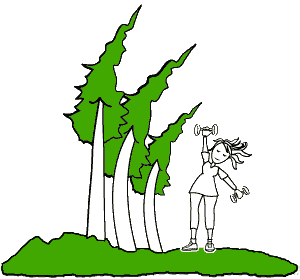Ever wondered why your knee hurts, when you’ve never injured it? How about your low back? Ever felt pain there?
To keep it simple, think of the body as a stack of joints. Each joint has a specific function, either mobility (movement) or stability (bracing). The joints alternate between mobility and stability. Now, this isn’t to say that the joints are only mobile or stable, but just primarily so.
We get a basic, alternating set of joints.
From the bottom up, here are the joints and their primary function:
Ankle – Mobility
Knee – Stability
Hip – Mobility
Lumbar spine – Stability
Thoracic spine – Mobility
Scapula – Stability
Shoulder – Mobility
Given that these are the primary functions of these joints, what happens when a joint that should be mobile is immobile? Problems at one joint usually show up as pain in the joint above or below.
Thus, when you lose ankle mobility, you get knee pain. When you lose hip mobility, you get low back pain, lose thoracic mobility, you get neck and shoulder or low back pain.
If you look at the body as a chain of joints, it makes sense. For instance, if the ankle becomes immobile, the knee, a joint that should be stable, becomes unstable. The ankle is supposed to be mobile; its job is to absorb the stress of landing on the foot as we walk or run. If the mobility isn’t there, then the stress is transferred to the joint above, the knee, which is not built for absorbing this stress. Hence, knee pain.
The hip should be mobile. It is meant to flex and extend. Flexion allows you to lift your leg forward to the front, extension allows you to bring your leg to the back. It also allows you to rotate your leg in and out and also to move your leg out to the side, and to cross your leg in front of the other. When these movements are stymied by immobility, there is compensatory movement in the lumbar spine (low back). Low back pain can result. There are, of course, other causes of low back pain, but one that is fixable with flexibility exercises; stretching, yoga, and other modalities.
If you can fix the cause of the problem, instead of treating what actually isn’t hurt, you can end your pain, and move like you were meant to move.
The above is a very simplified version of joint mobility/stability and resulting pain. As always, please consult your provider for medical assistance and advice.
-Contributed by Trainer Michelle

